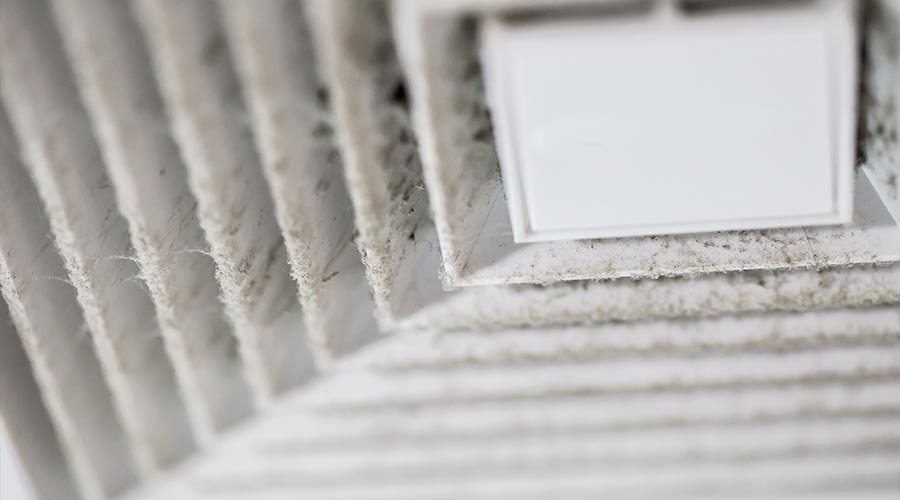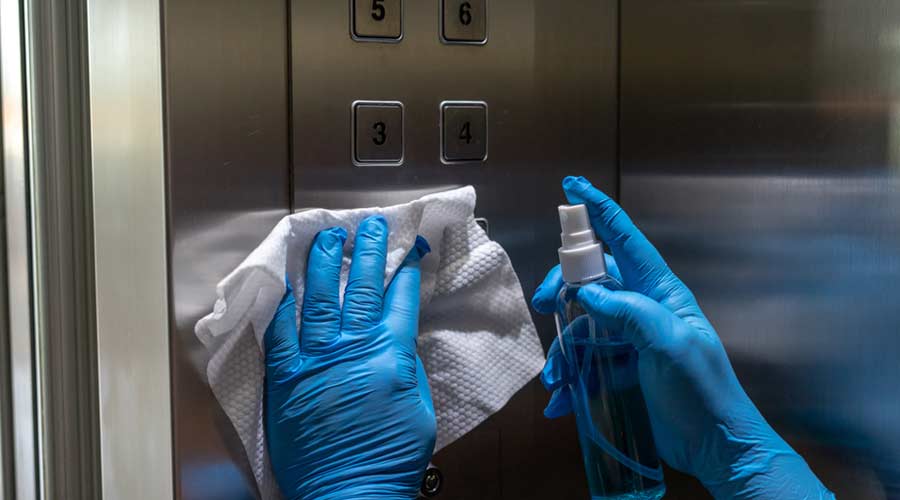
An individual's presence in a room can add 37 million bacteria into the air every hour, according to a study done by researchers at Yale University — and that bacterium thrives in dust. Not all dust can be seen by the naked eye, especially the grime that clings to objects above the head or near the ceiling, around vents, or in fans. The solution for facilities? Reducing dust.
Decreasing the amount of dust that becomes airborne helps cut down on hard-to-reach bacteria. That starts with entry matting, which not only helps prevent some of that dust from being tracked in on people’s shoes, but it also reduces outdoor pollutants like heavy metals and pesticide residue. If budgets don’t allow for the purchase of matting systems, they can be rented from a specialized provider.
“Cleaning departments should strongly encourage copious matting (10-15 feet) as some 80 percent of soil is tracked in on footwear,” says Allen Rathey, director of the Indoor Health Council.
Matting not only contains tracked in debris, but it will prevent dust from being kicked up, destined to land on textured ceilings, lights, air vents, exposed beams, fans, and more. That also reduces the fire risk – a useful side benefit.
Wayne Whitzell, second vice chair of the IFMA Global Executive Committee, points out that this might not be the case for older facilities that have dropped or drywall ceilings. But more recent architecture in facilities features open-concept rooms with exposed ductwork, lighting, or design elements. This presents a challenge for cleaning teams because the additional surfaces will attract debris and dust, but they are also difficult to reach for cleaning teams.
“High dusting has a big impact on improved Indoor Air Quality (IAQ), assuming it is regularly scheduled and not just done when the dust gets to be an inch thick or not done at all,” says Phil Carrizales, director of hygiene and facility solutions at Acme Paper and Supply Company, Jessup, Maryland. He adds that an appropriate timetable for high dusting can easily be arranged.
Scheduling High Dusting
Fortunately, there are ways to go about high dusting that can bring along that big impact. Cleaning managers should work with their teams to divide the building into zones and use that information to determine the frequency of high dusting, which should be called high vacuuming, suggests Whitzell. Not every zone requires high dusting at the same time. For example, zone one may need attention every six months while zone two can probably wait a year.
“Do an inspection. Take photos; you can put a camera on the end of a pole,” says Whitzell. “See what can be tolerated.”
It’s after this step is taken that leaders can determine the intervals for high dusting and prioritize those dollars.
If the building involves food service, it needs to be high dusted more often, or the health department might close the business down when they inspect, Whitzell says. For special occasions, like a stockholders’ meeting, high dust the day before. Otherwise, for example, perform this task on a Friday night when the occupants are gone and then come back on Saturday and do low dusting; picking up what has fallen from above.
Not implementing high dusting at all leads to increased dust buildup, the release of allergens and other contaminants into the ventilation system, ledges and piping, says John Selkow, director of operations services for Office Pride Commercial Cleaning Services, Palm Harbor, Florida.
“This looks bad from an appearance standpoint, reduces air quality and triggers allergies,” he adds. “It can also create a fire risk and other safety issues, which may make it difficult for the company to obtain insurance.”
That’s why departments shouldn’t wait until the dust reaches one inch in thickness before getting rid of it, explains Carrizales. If there is minimal traffic and the building has good air movement and filtration, it may be that high dusting can be done once a year. Other buildings may need a quarterly pass.
Employing the Right Equipment to Improve Indoor Air

 Celebrating BSCAI's 60th Anniversary eBook
Celebrating BSCAI's 60th Anniversary eBook The Down and Dirty on Cleaning in Virus Season
The Down and Dirty on Cleaning in Virus Season How Surfactant Use is Expanding in Commercial Cleaning
How Surfactant Use is Expanding in Commercial Cleaning